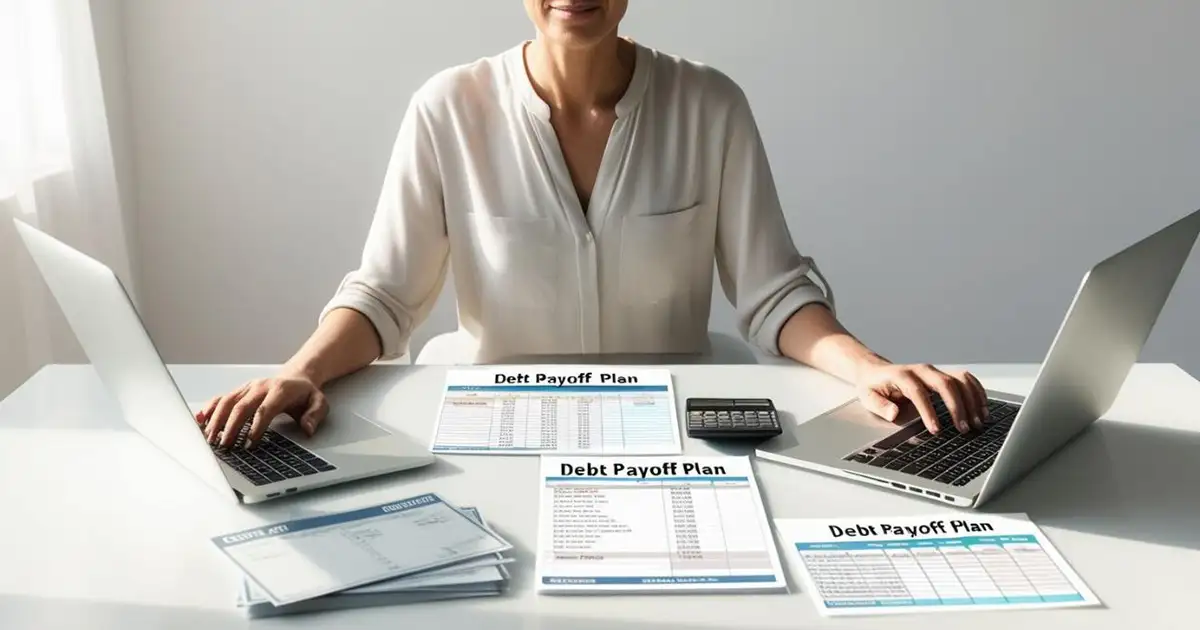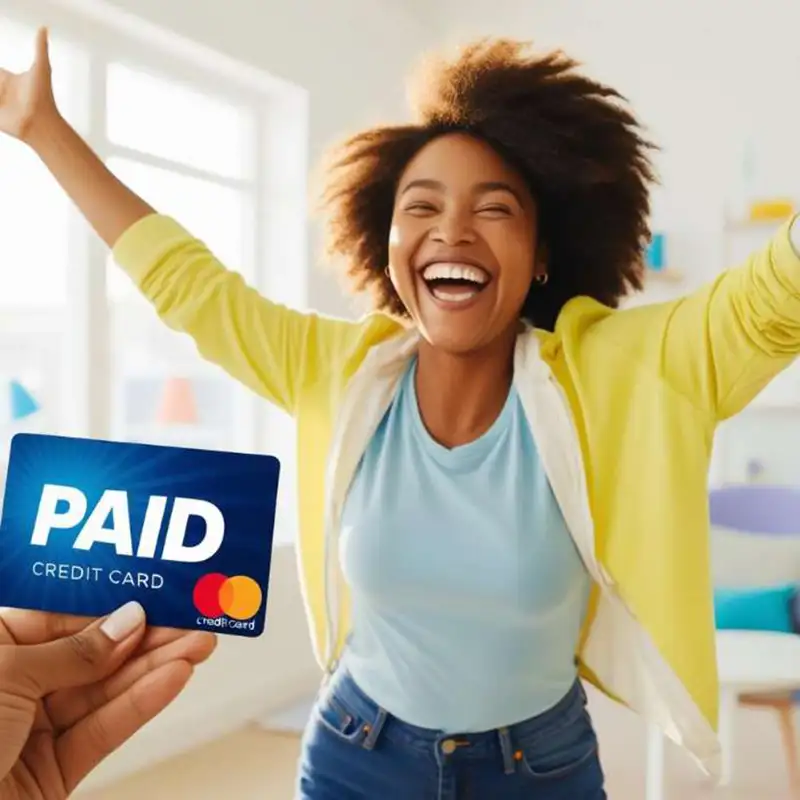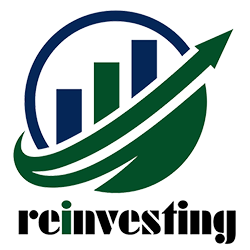10 Powerful Ways to Pay Off Credit Card Debt Faster
Jump to a Section

1. Use the Avalanche Method to Pay Off Credit Card Debt Efficiently
What it is
The Avalanche Method is a structured way to pay off credit card debt by attacking the most expensive balances first. You continue making minimum payments on all your credit cards, but channel any extra money toward the card with the highest interest rate. Once that card is paid off, the extra funds are redirected to the next-highest rate card, and so on.
This approach doesn’t prioritize balance size — it prioritizes APR, which determines how fast your debt grows. While you may not get the emotional satisfaction of knocking out a small balance quickly, you’re making a smarter financial move by reducing how much interest you accumulate each month. According to the Consumer Financial Protection Bureau, focusing on either the highest-interest balance or the smallest debt first can both be effective, depending on what keeps you motivated.
Why it saves money
Credit card interest compounds fast. Paying just the minimum on a 25% APR card could leave you in debt for years — even decades — while you pay back two or three times what you originally borrowed. The Avalanche Method helps you eliminate high-cost debt first, meaning your overall interest burden drops significantly over time.
This method can shave months or years off your repayment timeline and potentially save you hundreds to thousands of dollars in interest charges. If your goal is to pay off credit card debt faster without getting crushed by compounding interest, this is one of the most financially effective methods available.
Who it’s best for
The Avalanche Method is best for people who are motivated by logic and numbers rather than quick wins. If you’re committed to long-term savings and can stay focused without needing frequent emotional boosts, this method will work well.
It’s also ideal for those carrying large balances across multiple high-interest cards, especially if interest charges are consuming most of your monthly payments. If you’re serious about getting out of debt in the most cost-effective way, the Avalanche Method offers one of the smartest ways to pay off credit card debt fast.
2. Use the Snowball Method to Pay Off Credit Card Debt with Momentum
What it is
The Snowball Method is an approach to pay off credit card debt by focusing on your smallest balances first, regardless of interest rate. You continue making minimum payments on all cards but put all extra money toward the card with the lowest balance. Once it’s paid off, you roll that payment into the next-smallest card, creating a “snowball” effect of growing momentum.
This method is all about emotional wins — seeing a balance drop to zero gives you a rush of motivation that keeps you going. For many people, that boost is the key to staying committed.
Why it saves money
While the Snowball Method may not save the most in interest compared to the Avalanche, it can help you stay consistent long enough to actually finish the journey. Inconsistent debt payoff — where you stop and start — is more expensive than sticking to a slightly less optimal plan and actually finishing.
By knocking out smaller debts quickly, you reduce your total number of minimum payments, which can add up to big savings. Plus, staying motivated helps avoid relapse spending that puts you deeper in debt. The result? You still pay off credit card debt faster than doing nothing or giving up mid-way.
Who it’s best for
This method is ideal for people who need quick wins to stay encouraged. If you’re overwhelmed by seeing big balances and need tangible proof that you’re making progress, the Snowball Method can keep you emotionally engaged. It’s also helpful for those with several small balances spread across many cards, where reducing the number of open debts will feel like meaningful progress.
3. Use a Balance Transfer to Pay Off Credit Card Debt Without Interest
What it is
A balance transfer lets you move your existing credit card debt onto a new card that offers 0% interest for a limited time — typically 12 to 21 months. This gives you a window to aggressively pay off credit card debt without accruing new interest.
However, balance transfers usually include a 3%–5% fee on the transferred amount. The key is using the interest-free window wisely: avoid new charges and pay as much as you can during the promo period.
Why it saves money
This method is powerful because it stops the bleeding — temporarily. Instead of throwing away money on interest each month, every payment you make reduces your actual principal. If you pay off a $5,000 balance during a 0% APR promo, you can save over $1,000 in interest compared to carrying the debt on a 22% card.
Just be cautious: if you don’t pay it off in time, the standard high APR will kick in, and your savings could vanish. Used responsibly, though, it’s a fast-track way to pay off credit card debt before interest stacks up again.
Who it’s best for
Balance transfers are best for people with good-to-excellent credit (typically 680+) who qualify for these special offers. It’s ideal if you have a solid payoff plan and can realistically clear the balance within the promotional period. This method is also great if you’re currently stuck with one or more cards charging 20%+ APR and need breathing room to catch up.
4. Stop Using Credit Cards to Pay Off Credit Card Debt Effectively
What it is
Trying to pay off credit card debt while still using your cards is like trying to drain a bathtub with the faucet still on. This strategy involves putting a complete pause on all credit card spending while you focus on repayment. It doesn’t mean you have to close your accounts, but it does mean removing your cards from your wallet, unlinking them from apps, and cutting off access to temptations.
During this phase, you switch to cash, debit, or prepaid systems to cover your day-to-day expenses, allowing your debt payoff plan to actually work without being undermined by new charges.
Why it saves money
Every new charge you make while carrying a balance adds more to your total interest burden. Even small purchases reset your balance and increase the amount subject to interest. By freezing your card usage, you prevent further debt accumulation and ensure that each payment you make actually reduces your principal.
This shift also gives you greater control over spending habits and makes it easier to budget with a fixed income, ultimately helping you pay off credit card debt faster and more intentionally.
Who it’s best for
This strategy is crucial for anyone who’s been stuck in a “pay-and-charge” cycle—paying down balances but quickly running them back up again. It’s especially effective for emotional spenders, impulse buyers, or anyone trying to reset their financial discipline while digging out of debt.
5. Use a Bare-Bones Budget to Pay Off Credit Card Debt Aggressively
What it is
A bare-bones budget is a temporary, no-frills approach to money management where you cut spending down to the essentials for a set period—usually 60 to 90 days. This includes only what you truly need to survive: rent or mortgage, basic groceries, utilities, transportation, and minimum debt payments. Everything else—subscriptions, dining out, new clothes, hobbies—goes on pause.
The savings you create during this sprint are directed entirely toward your credit card debt, giving you an accelerated payoff boost without relying on extra income.
Why it saves money
Most people underestimate how much they spend on non-essentials. Cutting even $300 to $500 per month in discretionary expenses can add up to thousands over just a few months. That money, when redirected to your balances, lowers your interest charges and reduces the time you’ll stay in debt.
This is one of the fastest ways to take control and gain momentum, especially if your current lifestyle has been masking financial strain. It’s an intentional sacrifice that pays off in both the short and long term by helping you pay off credit card debt faster than you thought possible.
Who it’s best for
This approach is perfect for people who want to make fast, meaningful progress and are willing to sacrifice temporarily to regain financial freedom. It works well for those without extra income sources but who have room to tighten spending. If you’ve been treading water with your debt, a bare-bones budget can be the jolt you need to finally move forward.
6. Negotiate Interest Rates to Pay Off Credit Card Debt on Better Terms
What it is
Negotiating your credit card’s interest rate is one of the most overlooked yet accessible ways to pay off credit card debt faster. By simply calling your credit card issuer and requesting a lower APR, you can often reduce the amount of interest you’re being charged—especially if you have a good payment history or improved credit score.
The process usually involves a short conversation with a customer service representative and can sometimes result in either a permanent rate reduction or a temporary hardship rate, depending on your circumstances.
Why it saves money
Even a modest drop in your APR can lead to major savings. For example, lowering your rate from 26% to 18% on a $5,000 balance could save you over $400 a year in interest alone. That means more of your monthly payment goes toward the principal instead of interest, shortening your payoff timeline dramatically.
This strategy is effective even if you can’t increase your payments—it simply makes every dollar work harder. Negotiating is a no-cost, high-reward move for anyone trying to pay off credit card debt with more efficiency.
Who it’s best for
This method is best for borrowers with a consistent payment history, a decent credit score, or a longstanding relationship with their card issuer. It’s especially helpful if you’ve been denied a balance transfer offer but still want to reduce your interest burden. If you’re willing to make the call and advocate for yourself, this strategy can pay off—literally.
7. Use Automation and Weekly Payments to Pay Off Credit Card Debt with Consistency
What it is
Automating your payments ensures you never miss a due date, but pairing automation with weekly micro-payments can seriously accelerate your progress. The strategy is simple: set up automatic payments for at least the minimum due, then schedule smaller weekly payments—whatever you can afford—on top of that.
These frequent payments reduce your balance consistently throughout the month, rather than waiting for a single large payment once a month.
Why it saves money
Credit card interest is calculated using your average daily balance. So by paying down your balance more frequently, you lower that average—meaning less interest accrues over time. Even small weekly payments of $20 to $50 can add up to over $1,000 a year and shorten your repayment timeline significantly.
This method also helps you stay engaged with your debt payoff goals and smooths out your cash flow. More importantly, it ensures that your effort to pay off credit card debt is both proactive and sustainable.
Who it’s best for
This strategy is ideal for people who get paid weekly or biweekly, as well as those who prefer structured routines. It’s also a great fit for anyone who tends to forget due dates or struggles with lump-sum payments. If you’re looking for a low-friction way to stay consistent, weekly automation gives you structure with flexibility.
8. Track Triggers to Pay Off Credit Card Debt Without Backsliding
What it is
Tracking your emotional and behavioral triggers is a powerful way to gain control over the habits that lead to credit card debt. This means observing what’s happening in your life when you’re tempted to swipe—whether it’s stress, boredom, loneliness, or even celebration. The goal is to identify patterns and create new responses to those emotional cues.
You can use a journal, budgeting app, or even simple notes on your phone to record what you were doing, feeling, and buying in those moments. Awareness leads to choice—and choice leads to change.
Why it saves money
Many people accumulate credit card debt not because of major life events, but because of unconscious, repeated behaviors. A $30 online shopping binge every weekend might not feel like much—until it adds up to $1,500 a year. By learning your spending triggers, you can interrupt those habits before they become expensive patterns.
This strategy helps you stop digging the hole deeper while you work to pay off credit card debt. It also builds emotional intelligence around money—something that calculators and budgets alone can’t do.
Who it’s best for
This method is especially effective for emotional spenders, impulsive buyers, or anyone who uses shopping as a coping mechanism. If you’ve tried budgets and payoff plans in the past but always seem to slip back into old habits, tracking your triggers could be the missing piece. It’s about more than money—it’s about mastering your mindset.
9. Use Temporary Side Hustles to Pay Off Credit Card Debt with Extra Cash
What it is
A temporary side hustle is a short-term income boost you take on with one purpose: to pay off credit card debt. Unlike a second job meant to last forever, this is a focused sprint where all profits go directly to your balances. It can be as simple as delivering food, freelancing, selling items you no longer use, babysitting, or offering a specialized skill in your local area.
You don’t have to commit long-term—just long enough to knock down a chunk of your debt faster than you could with your primary income alone.
Why it saves money
Every extra dollar you earn and apply to your debt reduces the amount of interest you’ll pay. If you make $400 per month on the side and apply it for six months, that’s $2,400 toward your balance—not including the interest saved. This approach accelerates your timeline and can provide serious momentum, especially if you’ve felt stuck.
It’s one of the most direct ways to pay off credit card debt faster, because you’re expanding your resources instead of just shifting around existing funds.
Who it’s best for
This strategy works well for people with available time, flexible schedules, or monetizable skills. It’s ideal if your budget is already tight and you don’t have much room to cut expenses. Side hustles are also great for people who like to see rapid progress or need to pay off a specific amount in a short period of time—such as before a balance transfer promo ends.
10. Celebrate Milestones to Pay Off Credit Card Debt Without Burnout
What it is
Celebrating milestones is a motivational strategy that helps you stay emotionally engaged as you pay off credit card debt. These milestones might include paying off your first card, cutting your total debt in half, or completing a month without adding new charges. The key is to acknowledge progress in ways that don’t involve more spending.
Celebrations can be simple: a journal entry, a special meal at home, sharing your success with a friend, or marking the moment on a progress chart. These rituals reinforce your efforts and give your brain a reason to keep going.
Why it saves money
Burnout is a hidden cost of long-term debt repayment. When you feel like your sacrifices aren’t paying off or that the finish line is too far away, you’re more likely to revert to old habits—including spending that restarts the debt cycle. Celebrating wins helps you stay on track and reduces the emotional fatigue that leads to setbacks.
By building in non-financial rewards, you’re protecting your progress and boosting the likelihood that you’ll follow through and pay off credit card debt completely.
Who it’s best for
This strategy is helpful for anyone tackling a large or long-term balance. It’s especially powerful for people who struggle with discipline over time or who are doing this journey alone without outside encouragement. If motivation has been a challenge in the past, celebrating milestones might be the difference between stopping halfway and seeing it through.
Conclusion: Final Thoughts
If you’ve made it this far, you already know there’s no one-size-fits-all solution to eliminate credit card debt — but there are powerful strategies that work when applied with consistency. From using proven payoff methods like the Avalanche or Snowball to negotiating interest rates, tracking spending triggers, or generating extra income through side hustles, every one of these tactics is designed to help you pay off credit card debt faster and more efficiently.
The key is action. Pick one or two strategies and apply them this week. Then stack others as you build momentum. Don’t get stuck in research mode or wait for the “perfect” time — start now, with what you have.
Because the sooner you start paying down your debt, the sooner your money works for you, not your creditors.
You’ve got this. One card, one payment, one powerful move at a time.



